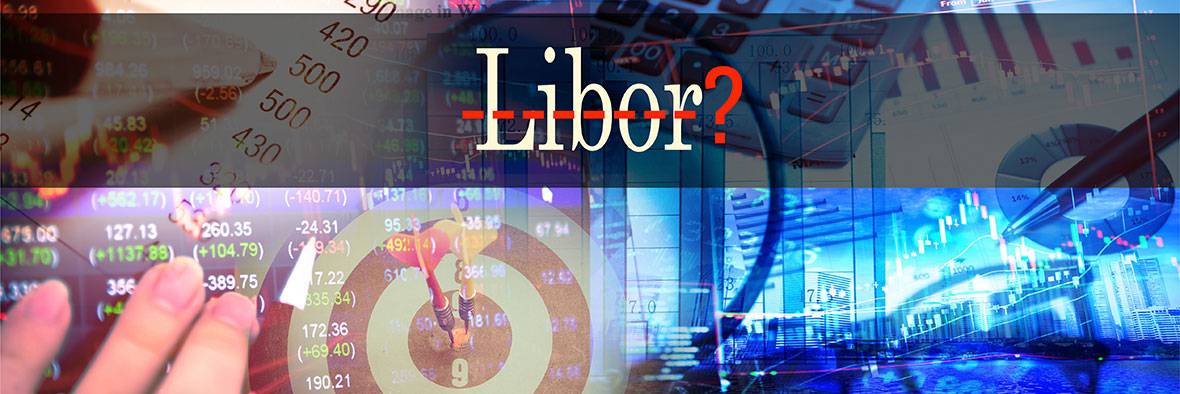In the historic conversion of the world’s financial markets away from Libor as the most widely used benchmark rate for loans and derivatives, most attention in the United States has been focused on the switch from Libor to SOFR (Secured Overnight Financing Rate). The demise of Libor, of course, arose from the manipulation of that rate by a relatively small group of traders in large banks whose job included submission of their bank’s rate every day at 11:00 a.m. London time for inclusion in the calculation of Libor. This in turn was used by a large number of banks for setting the benchmark floating reference rate in their own derivatives portfolios, as well as the rate on loans priced over Libor. This manipulation directly benefited the manipulators (both traders and their employer banks) by artificially increasing profits at certain trading desks, but also was used by some banks during the financial crisis to lower their perceived funding cost in order to appear more creditworthy.
The Libor rate applicable to so many loans was determined by aggregating the submission of a group of banks belonging to a predetermined panel of banks active in the international loan markets. Each bank would submit a rate it determined to be its cost of raising incremental funds at that moment for various maturities, and the composite of submissions for all such panel banks would be used to calculate the “Libor” Rate, which in turn would be applied to countless loans and derivative contracts. The primary flaw in the Libor rate determination was that the process of Libor determination rested upon the good faith determination of panel banks to submit a consistently representative rate for funds which was determined by their own judgment rather than purely market transactions. This opened the door to manipulation and self-dealing at both the personal and institutional level. The selection of SOFR as a replacement for Libor was strongly motivated by the desire to eliminate bank discretion and to replace it with a fully transparent and governmentally monitorable index derived from actual transactions. For more information, read GFMI’s articles: LIBOR SCHMIBOR: What’s Next? SOFR Part I and LIBOR SCHMIBOR: What’s Next? SOFR Part II.
Even with the impending replacement of Libor with SOFR, an important problem remains for smaller regional or specialized banking organizations in the United States. That is, their loan portfolios and their cost of funds is not tied to either Libor or SOFR. This means that those banks face significant rate differential or “basis” risk on any loans tied to SOFR and funded at their actual cost of funds.
Ameribor™(American Interbank Offered Rate) to the Rescue
The American Financial Exchange (AFX) was launched in December 2015, and is “a centralized, electronic, self-regulated, fully transparent platform … to directly reflect true unsecured funding costs for a nationally broad base of U.S. banks and financial institutions in the private sector”.1AFX is in collaboration with the Chicago Board Options Exchange (Cboe).
“AFX facilitates the determination of Ameribor™, a transaction-based interest rate benchmark. The rate is calculated as the weighted average daily volume in the AFX overnight unsecured loan market. The rate is now available on Bloomberg terminals under the ticker symbol AMBOR.”2Ameribor™ is denoted as a 360-day annualized percentage rate to the fifth decimal.
One of the elements leading to the demise of Libor was the “panel” nature of the data input, in that banks simply submitted their rate to the Libor process, but there was no direct market origin of the rate, thereby avoiding any inherent link to an independently derived market figure. This made it easy for collaborators to fudge the rate in their favor without it becoming immediately apparent. By contrast, the AFX defines two classes of participants in the AFX as follows:
“Interbank Loan Market Participants
Interbank Loan (IBL) Market Participants will consist only of eligible banks. Each IBL Market Participant is authorized to participate in the Loans Market (the Bilateral Loans Market, the Collateralized Loan Market, or both) and in a certain segment of the Ameribor™ Benchmark Auction Market.
Ameribor™Benchmark Participants
Ameribor™Benchmark Participants will consist only of eligible banks, which must be separately authorized to participate in this market, although it is anticipated that many banks will participate in both markets. Each Ameribor™Benchmark Participant commits to participating in each Ameribor™Benchmark Market Auction.”3
In other words, an actual auction will determine each bank’s contribution to the rate fixing, not just an estimate or a mere submission. These auctions also occur concurrently with the operation of other AFX markets. Important also is that Auction participants will consist only of eligible banks, and AFX focuses on small & mid-sized banks, although non-auction members of AFX include “non-bank financial institutions such as broker-dealers, insurance companies, private equity firms, hedge funds, futures commission merchants (FCMs), asset managers and finance companies.”4
While the jury is still out on the ultimate success of AFX and Ameribor™, it clearly offers a meaningful benchmark alternative for small and mid-size banks for whom SOFR may seem less relevant to interest differential risk management.
References
1 “American Financial Exchange (AFX) celebrates third year anniversary with milestones in membership, volume and new products, December 21, 2018 https://www.linkedin.com/pulse/american-financial-exchange-afx-celebrates-third-year-sandor/
2 “American Financial Exchange (AFX) celebrates third year anniversary with milestones in membership, volume and new products, December 21, 2018 https://www.linkedin.com/pulse/american-financial-exchange-afx-celebrates-third-year-sandor/
3 https://theafex.com/participant-classes/
 My Cart
My Cart
